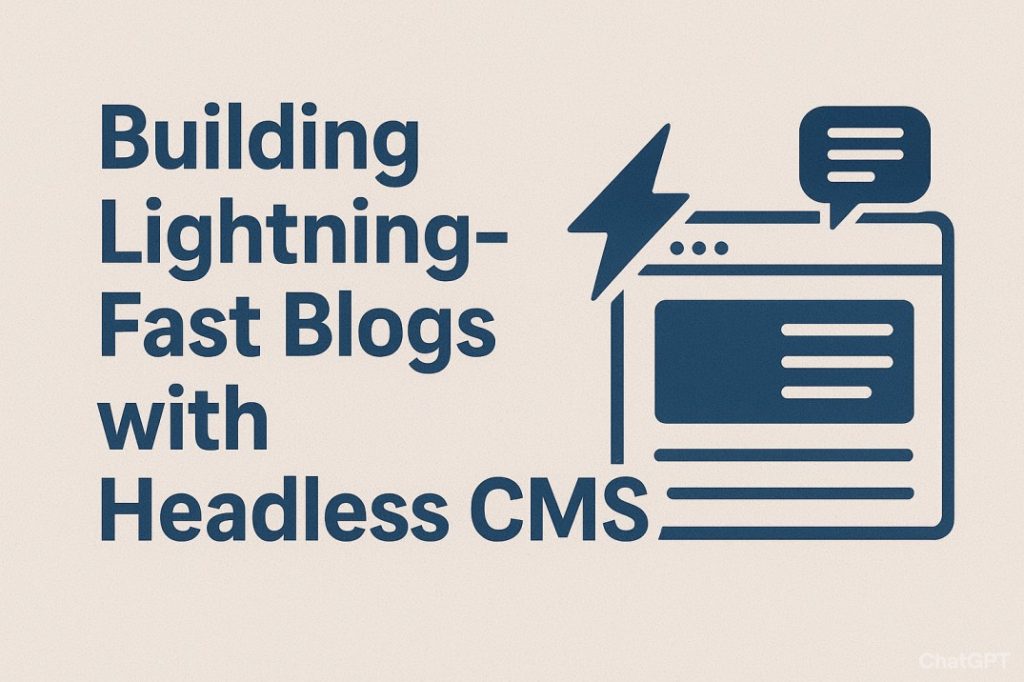
In the current digital landscape, websites that load slowly not only challenge patience but also drive users away. Google’s research shows that just a one-second lag can turn visitors away. For bloggers, this implies that any hard work invested in creating exceptional posts could be in vain if the website itself is slow. That’s where headless CMS platforms are changing the game. By decoupling the front end from the back end, they give you speed, flexibility, and the chance to build a blog that feels modern rather than stuck in the mid-2010s.
What Exactly Is a Headless CMS?
At first, the term might sound intimidating, “headless” anything usually does. But the idea is surprisingly simple. A headless CMS keeps your content in a central location (the body) and distributes it via APIs to any front end (the “head”) you select. Unlike traditional CMS platforms like WordPress, which bundle web content management and presentation into one package, headless CMS tools let you decide how and where your content appears. In effect, this ensures that your blog entries can load swiftly on your site, your mobile application or even via a smart device, all while not being restricted to a single inflexible template. It’s like writing once and publishing everywhere, without the bloat.
Why Speed Matters More Than Ever
Let’s be blunt, nobody has patience for a slow blog. Readers expect the same smooth experience they get from Instagram or Netflix. If your website hesitates, no matter how clever your content is, users won’t remain. A headless CMS solves this problem by eliminating unnecessary overhead. Content is delivered via the lightweight APIs, leading to faster loading speeds and smoother interactions. It’s also about the user experience. Search engines consider page speed when ranking, so a quicker blog is crucial for visibility rather than just a nice feature.
Flexibility for Design and Functionality
One of the overlooked advantages of headless CMS is the flexibility it provides. Conventional CMS systems can resemble being in a small workspace, you can only rearrange the setup a limited number of times before you encounter a barrier. With a headless setup, developers and designers aren’t boxed in. Utilizing contemporary frameworks such as React, Vue or Next.js, they can develop sleek, responsive front ends that enhance your blog’s visibility. That flexibility also future-proofs your site. If a new platform emerges tomorrow, you don’t need to rebuild your content system. You just plug your existing CMS into the new environment. It’s similar to having a content creator that’s ready for anything that follows.
Better Performance at Scale
Imagine your blog suddenly goes viral. Using a conventional CMS, a surge in traffic could lead to delays or potentially a system failure. Conversely, a headless CMS is designed to manage scalability. Because content is delivered through APIs and often cached at the edge through CDNs, the system distributes traffic more efficiently. That means your readers in New York and New Delhi can load your blog just as quickly, without overloading your server. For bloggers hoping to grow into media platforms or even dabble in e-commerce, this scalability is a lifesaver.
Content Personalization with Ease
There’s another perk called as personalization. Readers don’t just want content but they want content that feels tailored to them. Headless CMS solutions simplify the integration of personalized functionalities, analytics, and AI-based suggestions. A food blogger might showcase vegetarian meals for an individual and fast dinner suggestions for someone else, all organized through the same CMS. That type of user experience fosters loyalty. And in blogging, loyalty translates into repeat visits, higher engagement and eventually better monetization.
The Learning Curve (Because Nothing’s Perfect)
Certainly, let’s be straightforward about it. Transitioning to a headless CMS isn’t always straightforward. Bloggers without a technical background may find the setup overwhelming compared to the familiar “install-and-go” world of WordPress. You will probably require assistance from a developer to get started. But once the system is up, maintaining it is straightforward. Taking into account the future benefits like speed, scalability and flexibility, the initial obstacles are frequently worth tackling.
Conclusion
Building a lightning-fast blog in 2025 isn’t about working harder but about working smarter. Headless CMS solutions provide bloggers with the capabilities for rapid delivery, creative flexibility, and scalability without the constraints of conventional systems. Sure, the transition might take a little extra effort at the start, but the payoff is a blog that feels modern, loads quickly, and keeps readers coming back. At the end of the day, your words deserve an audience and nothing should get in the way of that, least of all a sluggish blog.




More Stories
How to Create a Wikipedia Page That Ranks in Google| A Detailed Guide
2025 digital marketing shift: why your business must adapt now Suggested titles
The Secret Strategy to Dominate Google Maps in Zirakpur and Panchkula